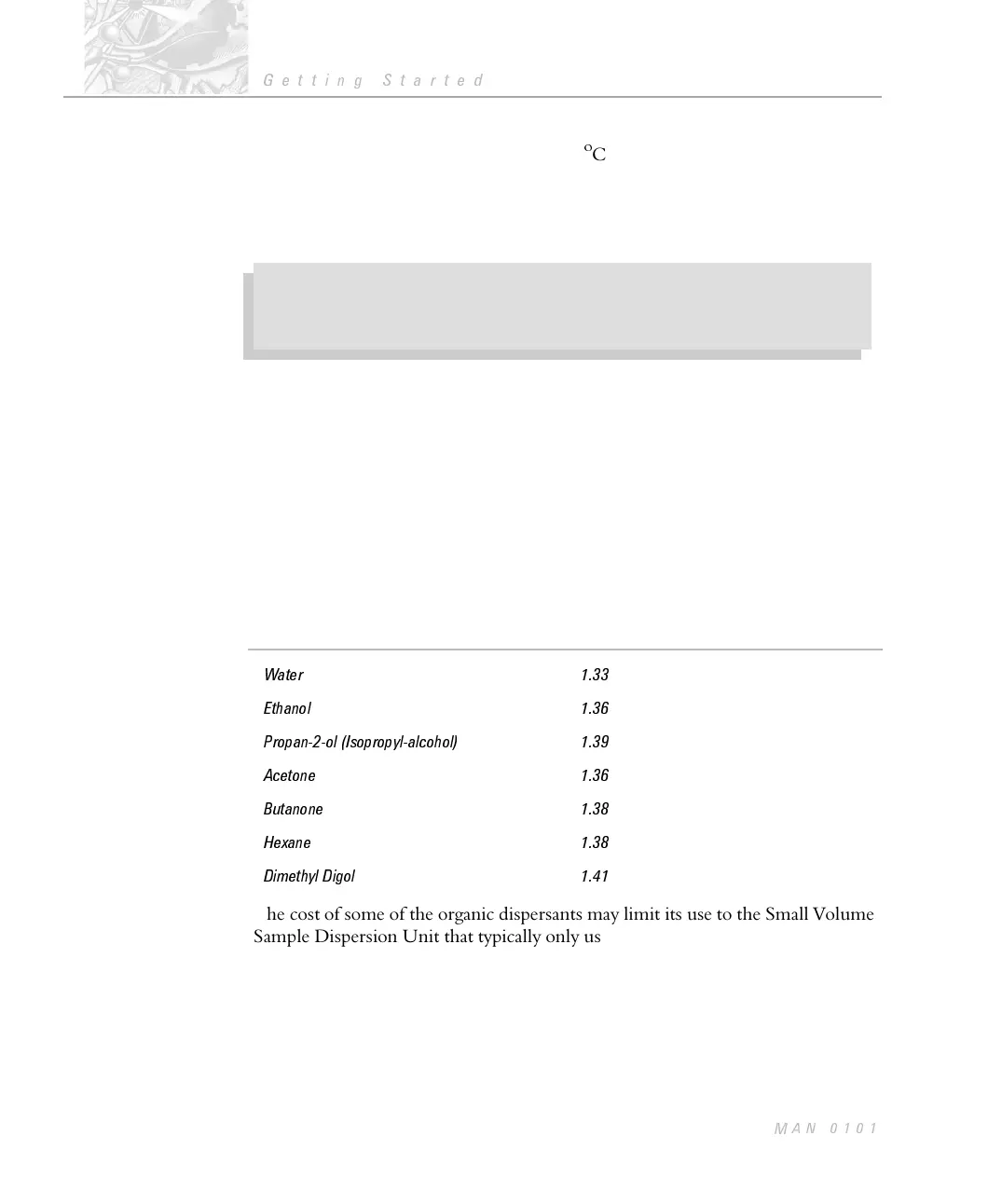tank will be suitable. Filter this water prior to use. Another solution is to warm
the dispersant (for water typically to 60 - 80
o
C) and then allow to cool before use.
#
Warning
When analysing particles suspended in a liquid dispersant, one of the most
important decisions is which liquid to use. The dispersant can be any clear (at
633nm wavelength) optically uniform liquid that does not interact with the
sample causing it to change its size. Clearly you wish to use the safest, lowest cost
solutions that are effective. Particles that give problems in one medium, such as
dissolution, may be quite suitable in another. In all instances where difficulties in
dispersion are experienced consider the option of another dispersant. The list
below gives the commonly used dispersants (together with their refractive index
for presentation calculations).
Dispersant Refractive index
Water 1.33
Ethanol 1.36
Propan-2-ol (Isopropyl-alcohol) 1.39
Acetone 1.36
Butanone 1.38
Hexane 1.38
Dimethyl Digol 1.41
The cost of some of the organic dispersants may limit its use to the Small Volume
Sample Dispersion Unit that typically only uses 100ml of dipersant. Also the
problem of the safe disposal of the sample after measurement must also be
considered. Always adopt the correct procedures for disposing of the sample and
dispersant, following any local guidelines. Most local regulations forbid hazardous
samples and dispersants to be tipped down the drain, allowing it to enter the
water system.
The practice of warming dispersants to allow de-gassing should not be
attempted on volatile dispersants. Never allow dispersants to reach their
boiling points.
CHAPTER 9
Getting Started
Page 9.4
MAN 0101

